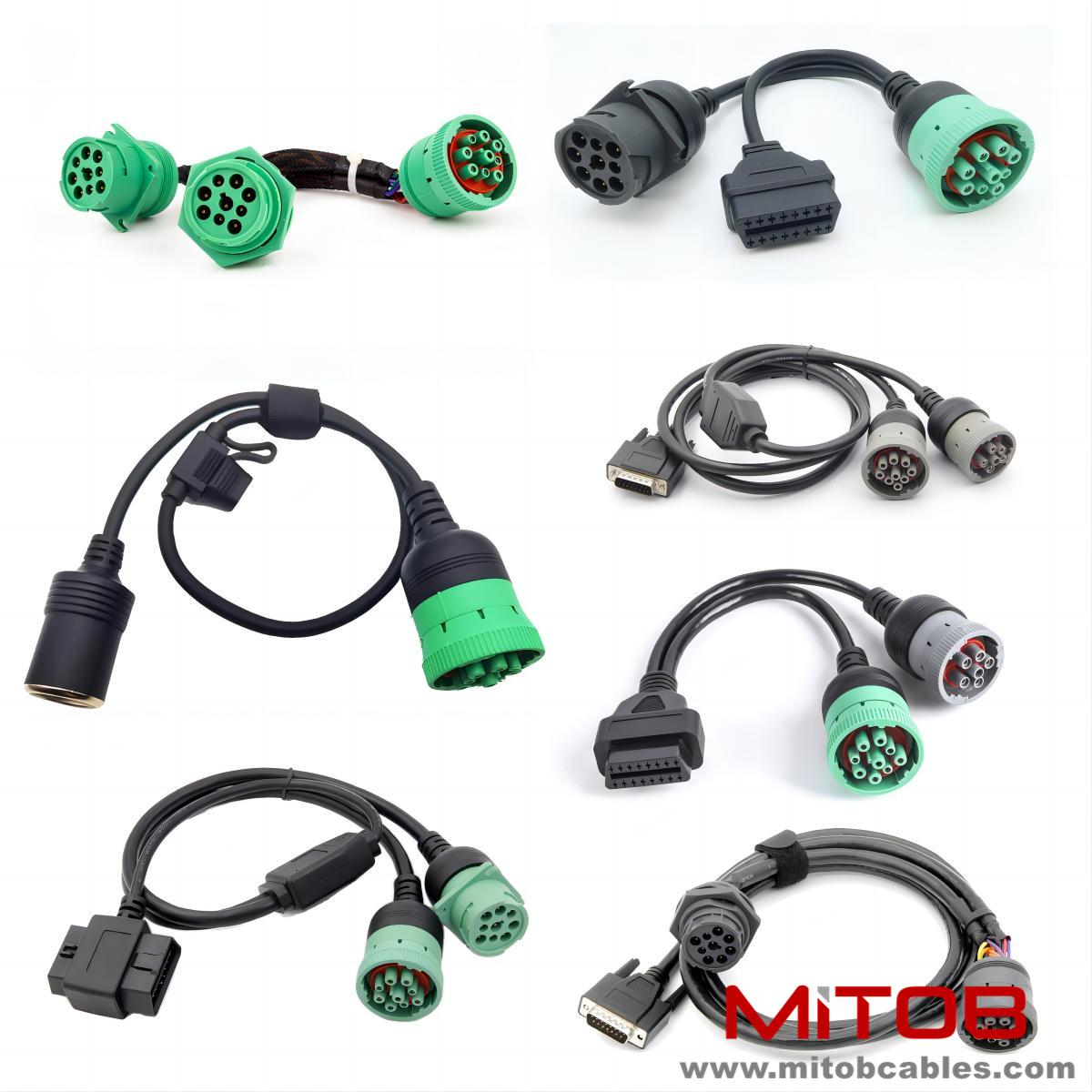Structural characteristics of OBD2 to J1939 and J1708 cables
The OBD2 to J1939 and J1708 cables typically have the following structural characteristics:
Interface type: One end is a 16 pin interface of OBD2, used to connect to the OBD2 diagnostic port of passenger cars. The other end is usually a Y-shaped fork structure, with J1939 9-pin interface and J1708 6-pin interface respectively, to adapt to different diagnostic ports such as commercial vehicles.

Internal wiring:
Wire: High quality copper wire with multiple stranded strands is used to improve flexibility and conductivity, ensure stability and reliability of signal transmission, and reduce signal attenuation and distortion during transmission.
Shielding layer: It usually has one or more shielding layers, such as metal woven mesh, aluminum foil, etc., used to shield external electromagnetic interference, prevent the signals transmitted inside the cable from being affected by external electromagnetic fields, and also avoid electromagnetic radiation from the signals inside the cable to the outside.
Insulation layer: The insulation layer is wrapped around each wire and made of materials with good insulation and temperature resistance, such as polyvinyl chloride (PVC), polytetrafluoroethylene (PTFE), etc., to ensure mutual insulation between wires, prevent short circuits, and maintain stable performance at different environmental temperatures.
Sheath: The outermost layer of a cable is the sheath, which is generally made of wear-resistant, oil resistant, and corrosion-resistant materials to protect the internal wiring of the cable from external physical damage and chemical corrosion, and to improve the durability and service life of the cable.
Contact: Kevin
Phone: 0086-18823374992
E-mail: kevin@mitobcable.com
Whatsapp:
Add: Bld B2, Floor7 , Xinghe Zhongkai AI Industrial Park, Zhongkai High-tech Zone, Huizhou,China